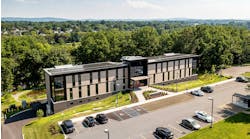Top 10 Ways to Maximize Energy Efficiency in Winter: A Comprehensive Guide for Building Managers
Efficient energy management plays a pivotal role in the upkeep of buildings, particularly during winter when heating demands peak. As a building manager, adopting energy-efficient strategies not only curtails operational expenses but also aligns with sustainability objectives. In this guide, we will cover essential tips specifically tailored to winter weatherization for your building.
1. Change Your Air Filters
One often overlooked but vital task is changing air filters regularly. Dirty filters force HVAC systems to work harder, consuming more energy and risking equipment health. According to the U.S. Department of Energy, replacing clogged filters with clean ones can reduce energy consumption by 5-15%, delivering tangible savings on utility bills.
2. Check Outdoor Air Damper Position
Have a professional HVAC technician evaluate dampers to minimize unconditioned outdoor air intake. This not only decreases HVAC system workload but also improves energy efficiency, reduces unit runtime, and ensures indoor air quality standards are met.
3. Adjust Thermostat Set Points
Transition smoothly between seasons by adjusting thermostat set points. For occupied time, set heating at 67 degrees F. and cooling at 72 degrees. For unoccupied time, adjust to 60 degrees for heating and 80 degrees for cooling. Gradual changes accommodate shifting temperatures, daylight hours and weather patterns.
4. Switch to Energy-Efficient Lighting
Replace traditional lighting with LEDs for lower electricity consumption and longer lifespans. Implement a lighting schedule aligned with natural daylight patterns, adjusting based on sunrise and sunset times. Install occupancy sensors to automatically control lighting in areas like bathrooms.
5. Start a Preventative Maintenance Schedule
Proactive HVAC maintenance is crucial for efficient heating and cooling. Establish a preventative maintenance schedule to detect and resolve potential issues early on. Regular inspections and servicing ensure your HVAC system operates reliably, especially during extreme weather conditions.
6. Educate Employees on Energy Management
Engage employees in energy management by explaining its importance for sustainability and environmental responsibility. Regularly communicate energy use goals and involve staff in achieving these objectives. A well-informed team is key to the success of your energy efficiency initiatives.
7. Check for Air Leaks in Windows and Doors
Perform a hand test at window and door seams to identify air leaks. Seal gaps with caulking, weather stripping, or sealing to prevent heat loss. Addressing air leaks enhances insulation and reduces the workload on your HVAC system, leading to energy savings.
8. Verify Thermostat or Zone Sensor Placement
Ensure thermostats or zone sensors are not near heat sources that could affect temperature regulation. Use a handheld thermometer to compare readings near the thermostat and the room's center, preventing inaccurate temperature perceptions and unnecessary energy consumption.
9. Check Insulation Levels
Examine insulation levels, especially when a thermostat is placed on an exterior wall. Inadequate insulation can lead to temperature imbalances, causing the thermostat to misinterpret conditions and trigger unnecessary energy consumption. Adequate insulation promotes consistent and efficient heating and cooling.
10. Clear Outdoor Equipment of Debris
Regularly clear leaves and debris from outdoor condenser unit grilles to prevent clogs and maintain optimal airflow. A clean HVAC system operates efficiently, prolonging its lifespan and reducing energy consumption.
In conclusion, implementing these energy efficiency tips is a strategic investment that not only reduces operational costs but also aligns your building with sustainable practices. As a building manager, your commitment to energy efficiency contributes to a greener future while ensuring the longevity and reliability of your building's systems.


